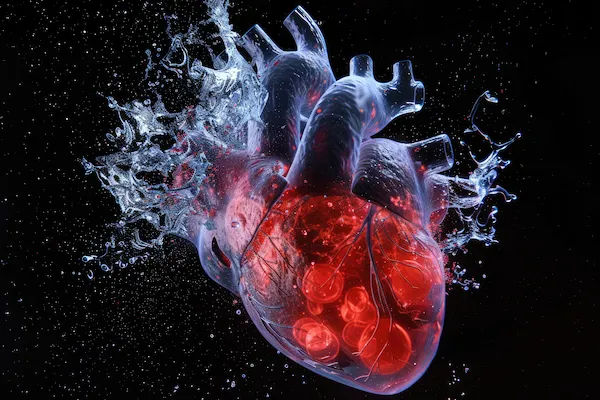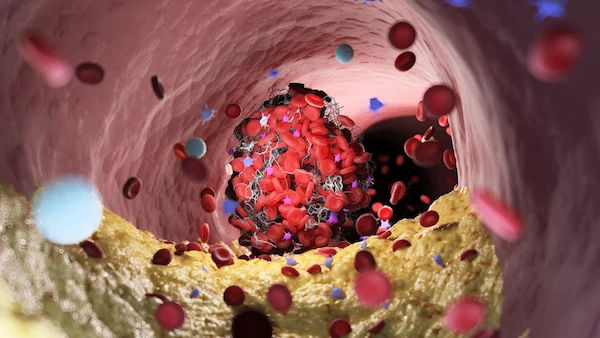Angioplasty vs. Angiography: Key Differences Explained
Know about angioplasty and angiography, how it works, what to expect, key differences explained, risks, complications and choosing the right one for you.

Written by Dr. Vasanthasree Nair
Reviewed by Dr. Dhankecha Mayank Dineshbhai MBBS
Last updated on 5th Sep, 2025

Introduction
When your doctor starts talking about heart health, terms like angiography and angioplasty often come up. They sound similar and are both related to your blood vessels, leading to frequent confusion. However, understanding the fundamental difference between angioplasty and angiography is crucial for any patient navigating a potential heart condition. In simple terms, one is a diagnostic tool, a sophisticated camera for your arteries, while the other is a treatment, a repair job for those arteries. This guide will break down each procedure, explaining its distinct purposes, how they are performed, what to expect, and why you might need one or both.
What is Angiography? The Diagnostic Map
Angiography (also called cardiac catheterisation or arteriography) is a medical imaging technique used to visualise the inside of your blood vessels, organs, and heart chambers. It's primarily a diagnostic procedure, meaning its job is to find and evaluate problems, not to fix them.
Consult a Cardiologist for Personalised Advice
How Does an Angiogram Work?
The process involves threading a thin, flexible tube called a catheter through an artery, usually in the wrist (radial artery) or groin (femoral artery). The catheter is carefully guided to the area of interest, such as the coronary arteries surrounding the heart. A special contrast dye is then injected through the catheter. This dye is visible on X-ray images.
As the dye flows through your blood vessels, a series of X-rays (a "movie") is taken, revealing the outline and flow of blood. This allows cardiologists to see any narrowing, blockages, aneurysms, or other abnormalities.
Why Would You Need a Coronary Angiogram?
Your doctor may recommend this diagnostic test if you have symptoms or risk factors for coronary artery disease (CAD), such as:
- Chest pain (angina)
- Shortness of breath
- Abnormal results on a stress test
- Previous heart attack
- Preparing for heart valve surgery
What is Angioplasty? The Treatment Procedure
Angioplasty, often paired with stenting, is a therapeutic procedure designed to open narrowed or blocked arteries. If angiography is the map, angioplasty is the construction crew that repairs the road. The formal medical term is Percutaneous Coronary Intervention (PCI).
The Angioplasty and Stenting Process
Angioplasty typically follows immediately after an angiogram if a significant blockage is identified. Using the same catheter access point, a different catheter is guided to the exact site of the blockage. This catheter has a tiny deflated balloon at its tip.
1. Balloon Inflation: The balloon is carefully inflated at the site of the blockage. This pushes the plaque (fatty deposit) against the artery wall, compressing it and widening the artery to restore blood flow.
2. Stent Placement: In nearly all modern angioplasties, a stent is also placed. A stent is a small, mesh-like metal tube that is mounted on the balloon. When the balloon inflates, it expands the stent and locks it into place against the artery wall. The balloon is then deflated and removed, but the stent remains permanently, acting as a scaffold to keep the artery open.
Conditions Treated by Angioplasty
This interventional cardiology procedure is used to treat:
Coronary artery disease (CAD)
- To relieve angina and improve blood flow to the heart muscle
- As an emergency treatment during a heart attack, to quickly open a blocked artery and minimise heart muscle damage
Head-to-Head: Key Differences Between Angioplasty and Angiography
While they are often performed in sequence, it's important to understand their distinct roles. This table summarises the core differences:
The Patient Experience: What to Expect
During the Procedure
For both procedures, you will be awake but sedated to help you relax. Local anaesthesia will numb the catheter insertion site. You may feel a warm, flushing sensation when the contrast dye is injected during the angiogram. During angioplasty, you might feel temporary chest pain as the balloon is inflated, as it briefly blocks blood flow.
Recovery and Aftercare
- After Angiography: If no angioplasty is performed, recovery is relatively quick. You'll need to lie flat for a few hours to prevent bleeding from the catheter site. You can usually go home the same day or the next morning.
- After Angioplasty: Recovery is similar but may involve a short hospital stay (1-2 days) for monitoring. Because a stent is placed, you will be prescribed antiplatelet medications (like aspirin and clopidogrel) to prevent blood clots from forming on the new stent. Adhering to this medication regimen is critical.
Risks and Complications
Both procedures are considered safe and common, but like any medical procedure, they carry some risks.
- Angiography Risks: Bleeding or bruising at the catheter site, allergic reaction to contrast dye, kidney damage from the dye (in rare cases), and very rarely, damage to the artery.
- Angioplasty Risks: Includes all the risks of angiography, plus additional risks related to the treatment itself, such as blood clots, re-narrowing of the artery (restenosis), heart attack, or stroke (both very rare).
Making the Decision: Which One is Right for You?
The decision isn't about choosing one over the other. The process is logical and sequential.
1. Symptoms & Testing: Based on your symptoms and non-invasive tests (like a stress test), your cardiologist may suspect coronary artery disease.
2. Diagnostic Angiogram: They will recommend an angiogram to get a definitive look inside your arteries and confirm the presence and severity of any blockages.
3. Treatment Plan: During the same procedure, if a significant blockage is found that is suitable for angioplasty, your doctor may proceed with it immediately. In other cases, they might discuss the findings with you afterwards and recommend a plan, which could include medication, angioplasty, or coronary artery bypass surgery (CABG) for more complex blockages.
Conclusion: Two Sides of the Same Coin
Understanding the difference between angioplasty and angiography empowers you to be an active participant in your heart health. Remember: angiography is the diagnostic test that finds the problem, creating a detailed map of your coronary arteries. Angioplasty is the minimally invasive treatment that fixes the problem, using that map to guide the opening of blocked arteries and often placing a stent to ensure they stay open. While they are distinct in purpose, they work together seamlessly in modern cardiology to diagnose and treat heart disease effectively. If your doctor recommends either procedure, don't hesitate to ask questions.
Consult a Cardiologist for Personalised Advice
Consult a Cardiologist for Personalised Advice

Dr. Anand Ravi
General Physician
2 Years • MBBS
Bengaluru
PRESTIGE SHANTHINIKETAN - SOCIETY CLINIC, Bengaluru

Dr. Zulkarnain
General Physician
2 Years • MBBS, PGDM, FFM
Bengaluru
PRESTIGE SHANTHINIKETAN - SOCIETY CLINIC, Bengaluru

Dr. Tripti Deb
Cardiologist
40 Years • MBBS, MD, DM, FACC, FESC
Hyderabad
Apollo Hospitals Jubilee Hills, Hyderabad
Dr. Diganta Buragohain
Cardiologist
1 Years • "DM (Cardiology) in 2025 from NEIGRIHMS, Shillong MD (General Medicine) in 2020 Gauhati Medical College, MBBS in 2015 from Gauhati Medical College,"
Guwahati
Apollo Excelcare Hospital, Guwahati

Dr. Rakesh Gopal
Cardiologist
22 Years • “ Trained in Trans Aortic Valve Implantation ( TAVI ) from Mehmet Akif Ersoy Hospital Istanbul, Turkey “ & MD (General Medicine), FRCP (Glasglow)DNB( Cardiology), FESC, HICR Cert (Harvard University, USA), Angioplasty Training from Washington Adventist Hospital USA, Asan Medical Centre, Seoul Korea, Board certified in Cardio Oncology, ICOS- USA
Chennai
Apollo Hospitals Heart Centre Thousand Lights, Chennai
(100+ Patients)
Consult a Cardiologist for Personalised Advice

Dr. Anand Ravi
General Physician
2 Years • MBBS
Bengaluru
PRESTIGE SHANTHINIKETAN - SOCIETY CLINIC, Bengaluru

Dr. Zulkarnain
General Physician
2 Years • MBBS, PGDM, FFM
Bengaluru
PRESTIGE SHANTHINIKETAN - SOCIETY CLINIC, Bengaluru

Dr. Tripti Deb
Cardiologist
40 Years • MBBS, MD, DM, FACC, FESC
Hyderabad
Apollo Hospitals Jubilee Hills, Hyderabad
Dr. Diganta Buragohain
Cardiologist
1 Years • "DM (Cardiology) in 2025 from NEIGRIHMS, Shillong MD (General Medicine) in 2020 Gauhati Medical College, MBBS in 2015 from Gauhati Medical College,"
Guwahati
Apollo Excelcare Hospital, Guwahati

Dr. Rakesh Gopal
Cardiologist
22 Years • “ Trained in Trans Aortic Valve Implantation ( TAVI ) from Mehmet Akif Ersoy Hospital Istanbul, Turkey “ & MD (General Medicine), FRCP (Glasglow)DNB( Cardiology), FESC, HICR Cert (Harvard University, USA), Angioplasty Training from Washington Adventist Hospital USA, Asan Medical Centre, Seoul Korea, Board certified in Cardio Oncology, ICOS- USA
Chennai
Apollo Hospitals Heart Centre Thousand Lights, Chennai
(100+ Patients)




